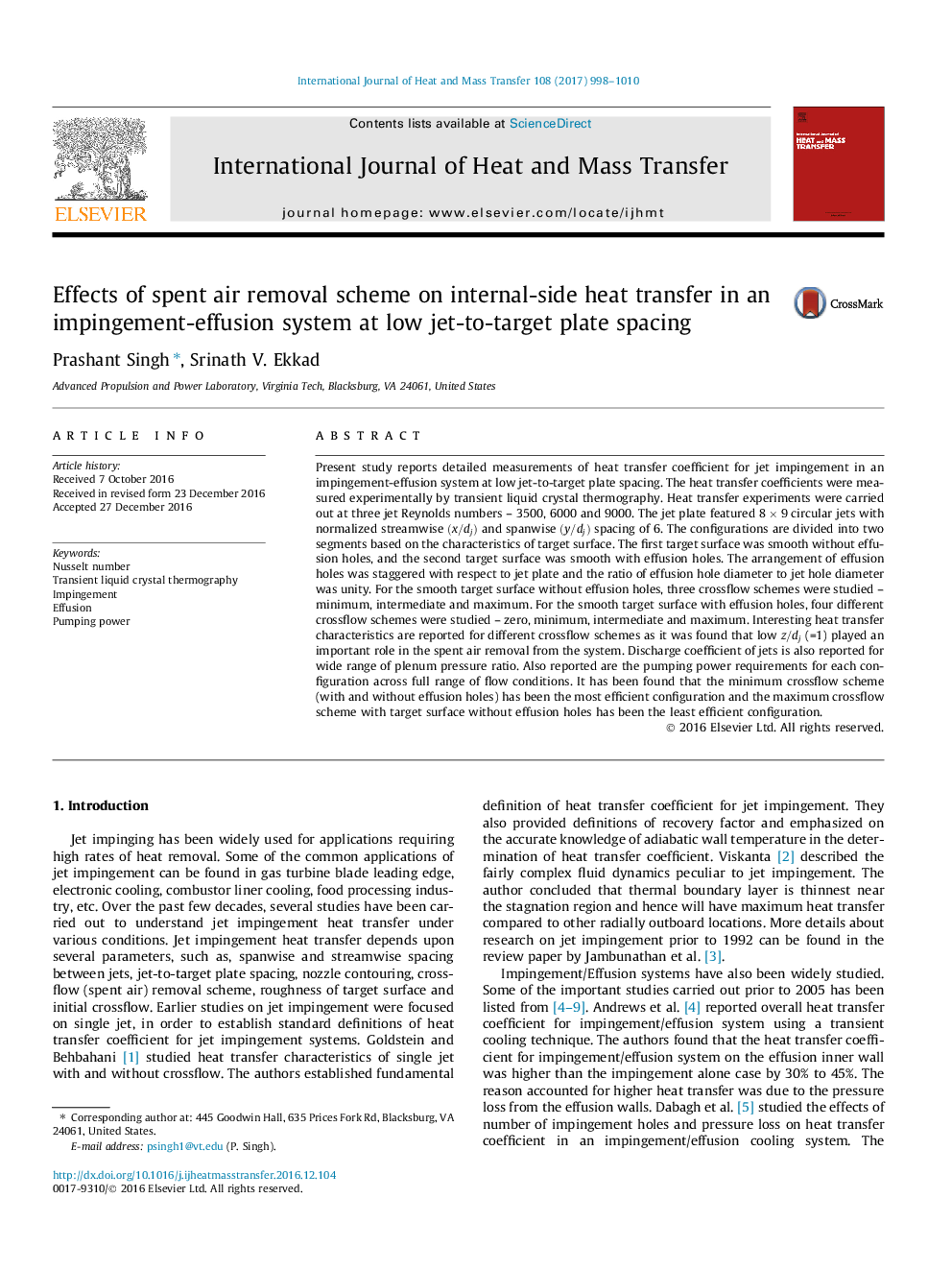| کد مقاله | کد نشریه | سال انتشار | مقاله انگلیسی | نسخه تمام متن |
|---|---|---|---|---|
| 4994336 | 1458034 | 2017 | 13 صفحه PDF | دانلود رایگان |
عنوان انگلیسی مقاله ISI
Effects of spent air removal scheme on internal-side heat transfer in an impingement-effusion system at low jet-to-target plate spacing
ترجمه فارسی عنوان
اثرات برنامه حذف هوایی منتقل شده در انتقال گرمای داخلی در سیستم نفوذپذیری در فاصله پایین جت به هدف
دانلود مقاله + سفارش ترجمه
دانلود مقاله ISI انگلیسی
رایگان برای ایرانیان
کلمات کلیدی
موضوعات مرتبط
مهندسی و علوم پایه
مهندسی شیمی
جریان سیال و فرایندهای انتقال
چکیده انگلیسی
Present study reports detailed measurements of heat transfer coefficient for jet impingement in an impingement-effusion system at low jet-to-target plate spacing. The heat transfer coefficients were measured experimentally by transient liquid crystal thermography. Heat transfer experiments were carried out at three jet Reynolds numbers - 3500, 6000 and 9000. The jet plate featured 8Â ÃÂ 9 circular jets with normalized streamwise (x/dj) and spanwise (y/dj) spacing of 6. The configurations are divided into two segments based on the characteristics of target surface. The first target surface was smooth without effusion holes, and the second target surface was smooth with effusion holes. The arrangement of effusion holes was staggered with respect to jet plate and the ratio of effusion hole diameter to jet hole diameter was unity. For the smooth target surface without effusion holes, three crossflow schemes were studied - minimum, intermediate and maximum. For the smooth target surface with effusion holes, four different crossflow schemes were studied - zero, minimum, intermediate and maximum. Interesting heat transfer characteristics are reported for different crossflow schemes as it was found that low z/dj (=1) played an important role in the spent air removal from the system. Discharge coefficient of jets is also reported for wide range of plenum pressure ratio. Also reported are the pumping power requirements for each configuration across full range of flow conditions. It has been found that the minimum crossflow scheme (with and without effusion holes) has been the most efficient configuration and the maximum crossflow scheme with target surface without effusion holes has been the least efficient configuration.
ناشر
Database: Elsevier - ScienceDirect (ساینس دایرکت)
Journal: International Journal of Heat and Mass Transfer - Volume 108, Part A, May 2017, Pages 998-1010
Journal: International Journal of Heat and Mass Transfer - Volume 108, Part A, May 2017, Pages 998-1010
نویسندگان
Prashant Singh, Srinath V. Ekkad,
